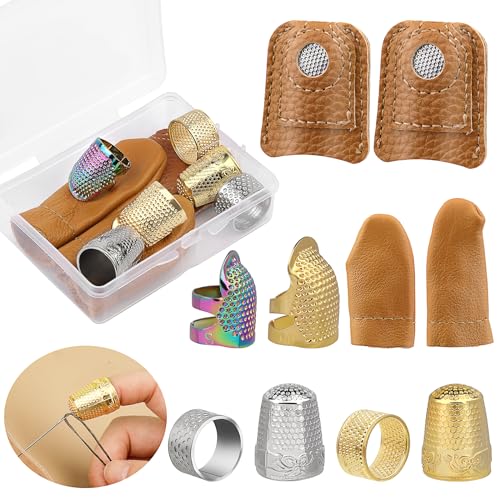Understanding the Importance of a Thimble
A thimble is a small tool worn on the finger to protect it while sewing. It is commonly made of metal or plastic and has a dimpled surface to provide grip and prevent the needle from slipping. Thimbles are essential for sewers, as they help with control, speed, and accuracy during hand stitching.
Over time, thimbles can become worn out or damaged due to extensive use. When this happens, it is important to repair or replace the thimble to ensure optimal sewing performance. Repairing a thimble can be a simple process if done correctly.
Assessing the Damage
The first step in repairing a thimble is to assess the extent of the damage. Thimbles can experience various issues, such as dents, scratches, or holes. Assessing the damage will help determine the appropriate repair method.
If the thimble has minor dents or surface scratches, these can typically be fixed with some basic tools and materials. However, if the thimble has a hole or significant damage, it may be best to replace it altogether.
Repairing Minor Dents and Scratches
If your thimble has minor dents or scratches, you can attempt to repair it yourself using the following steps:
- Clean the thimble: Start by cleaning the thimble with warm soapy water to remove any dirt or debris. Dry it thoroughly with a soft cloth.
- Heat the thimble: Using a heat source such as a candle or lighter, heat the damaged area of the thimble. Be careful not to overheat it, as excessive heat can cause further damage.
- Use a thimble pusher or similar tool: Once the thimble is warmed up, quickly press the damaged area from the inside using a thimble pusher or a similar tool. Apply gentle pressure until the dent pops out or the scratch becomes less noticeable.
- Polish the thimble: After repairing the dent or scratch, polish the thimble with a metal or plastic polish to remove any remaining marks or blemishes.
If you do not feel comfortable repairing the thimble yourself, you can also take it to a professional jeweler or sewing store for assistance.
Replacing the Thimble
If the damage to your thimble is too severe to repair or if you prefer a brand new thimble, replacing it is the best option. You can find thimbles at sewing stores, online marketplaces, or even local craft stores. Consider the following factors when choosing a new thimble:
- Material: Thimbles are available in various materials, including metal, plastic, and even leather. Choose a material that suits your sewing needs and preferences.
- Size: Thimbles come in different sizes to accommodate various finger sizes. Make sure to choose a thimble that fits comfortably on your finger.
- Design: Thimbles can also have decorative elements or additional features, such as a rubber cap for extra grip. Consider any design features that may enhance your sewing experience.
Once you have purchased a new thimble, make sure to properly clean and maintain it to prevent future damage.
Maintaining Your Thimble
To keep your thimble in good condition, follow these maintenance tips:
- Clean regularly: Clean your thimble after each use to remove any dirt, oils, or debris. Use warm soapy water and a soft cloth to clean the thimble, and dry it thoroughly before storing.
- Avoid extreme temperatures: Thimbles can be sensitive to extreme heat or cold, so avoid exposing them to intense temperature changes or direct sunlight.
- Store properly: Store your thimble in a dry and safe place, preferably in a protective case or pouch. This will help prevent accidental damage and prolong its lifespan.
- Inspect for damage: Regularly inspect your thimble for any signs of damage or wear. Address any minor issues promptly to prevent further damage.
By following these steps, you can repair or replace your thimble as needed and ensure it remains in good working condition for all your sewing projects.






